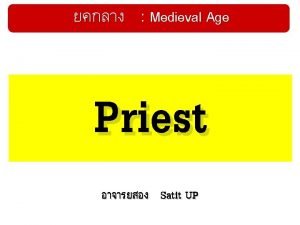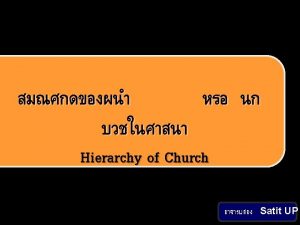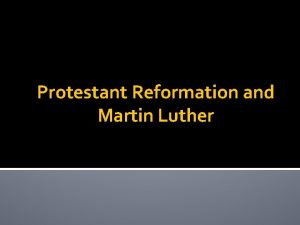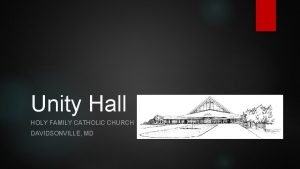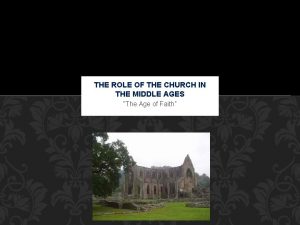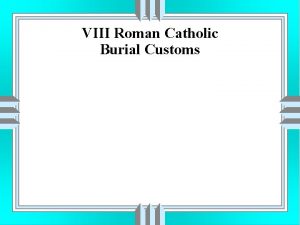Churches in the Modern World Roman Catholic Church





- Slides: 5

Churches in the Modern World: Roman Catholic Church Architecture in Britain, 1955 to 1975 A touring exhibition on modern Catholic Church Architecture based on research from an AHRC-funded research project Submitted by Dr A. Gillick

Churches in the Modern World: Catholic Church Architecture 1955 - 1975 The exhibition presented nine significant case study buildings using new archival research, new and archive photography, new drawings, original architects’ sketches and quotations, alongside important quotations from documents of the period, including the Second Vatican Council. The case studies were selected to illustrate three key themes in the research: Tradition and Modernity; Devotion and Liturgy; Church and City. The exhibition was designed by Collective Architecture to be freestanding for placement in nontraditional venues such as churches. It was shown at seven venues ranging from major cathedrals of the period to the Lighthouse centre for Architecture and Design in Glasgow. Dr Gillick was the co-curator of the exhibition. His contribution included primary research in archives and architectural practices, discovering significant new material on the subject, plan drawings and photographs, collaboration in exhibition design, and organising venues for the exhibition. 1 Dr Robert Proctor and Dr Ambrose Gillick View of exhibition

A typical Roman Catholic parish church built in Britain in the mid-1970 s looked radically different from any church buildings which had been built twenty years earlier. The two decades between 1955 and 1975 witnessed substantial changes within the Roman Catholic Church in the fields of theology and liturgy, with decisive effects on church architecture. It was also a period of transition in architecture more generally, from traditional and historical styles to modern design, a shift which profoundly affected the appearances of church buildings, even those by architecture firms which continued to operate throughout the period. This was also a period of massive urban transformations, as housing estates and New Towns were built to accommodate people moved out of city centres and into new communities. To follow these population movements the Roman Catholic Church undertook a vast building campaign of new churches, often seen as hubs of community and expressions of identity. This project aimed to examine all these factors by looking in detail at a selection of the many churches of the period. Of the hundreds built, few were published in any significant way at the time, and even fewer have been published since, so there is a current lack of available knowledge of this body of architecture. Many churches are architecturally innovative and historically interesting, but in danger of being demolished or altered as ideas about church architecture and the liturgy change again. This project will therefore raise awareness of this rich architectural and religious heritage, while analysing and interpreting the buildings according to their historical The exhibition in location in Liverpool Cathedral

The research involved surveys of selected case study buildings, predominantly in the centres and suburbs of major cities in England, Scotland Wales. Historical investigation using periodicals and archives aims to discover more about the architectural, institutional and social frameworks within which churches were produced. Dr Ambrose created survey drawings of some of the most significant buildings for publication, and collecting other illustrative material. The principal investigator is writing a book which deals with the subject thematically, drawing on a wide range of buildings, but studying the smaller number of selected case studies in greater depth. The images formed the basis of the exhibition, which was intended to take the research to various communities in architecture and the Church who share an interest in this history. The exhibition presented nine significant case study buildings using new and archive photography, new drawings, original architects’ sketches and quotations, alongside important quotations from documents of the period, including the Second Vatican Council. The case studies were selected to illustrate three key themes in the research: Tradition + Modernity; Devotion + Liturgy; Church + City. At the Lighthouse in Glasgow, projection facilities were used to show additional Scottish churches that echoed these themes. The exhibition was designed by Collective Architecture in Glasgow, whose simple and effective designed used cardboard modules and paper inspired by modernist architecture, religious icons and midcentury graphic design. Image one & a description of what we are looking at in the context of the project.

It was shown at The Lighthouse, Glasgow, 5 September to 16 October 2012; Liverpool Metropolitan Cathedral, 7 September to 7 October 2012; St Chad’s Roman Catholic Cathedral, Birmingham, 9 October to 5 November 2012; St Mary’s Roman Catholic Cathedral, Edinburgh, 22 October to late November 2012; Leeds Trinity University College, 5 November to 9 December 2012; St Augustine’s Church, Grosvenor Square, Manchester, 10 December 2012 to 7 January 2013; St Luke’s Church, Pinner, 3 to 29 April 2013. Morevoer, where possible, the exhibition was timed to coincide with events such as the Liverpool Biennale and open-door events. This meant that the exhibition had a broad reach, with an estimated audience of over 15, 000 people. Proctor and Gillick presented the following paper relating to the exhibition and this research: ‘Form and Reform: Roman Catholic church architecture in Britain and the Liturgical Movement before Vatican II’ at European Architectural History Network International Meeting, Brussels, 1 June 2012 | This paper was given at the European Architectural History Network (EAHN) second International Meeting conference at Brussels, 31 May to 2 June 2012. The project was featured in the following research report: ‘Research Report: Roman Catholic Church Architecture in Britain, 1955 to 1975′, in Art and Christianity, no. 72 (winter 2012), pp. 16 -17 | A news article describing the project was written for this journal received by members of Art & Christianity Enquiry. Ambrose Gillick also wrote an article for the Catholic Times: ‘Why We Should Prize Our “Ugly” Churches’, in Catholic Herald, 20 January 2012, p. 7 The exhibition in Birmingham and a closeup of the exhibition design
